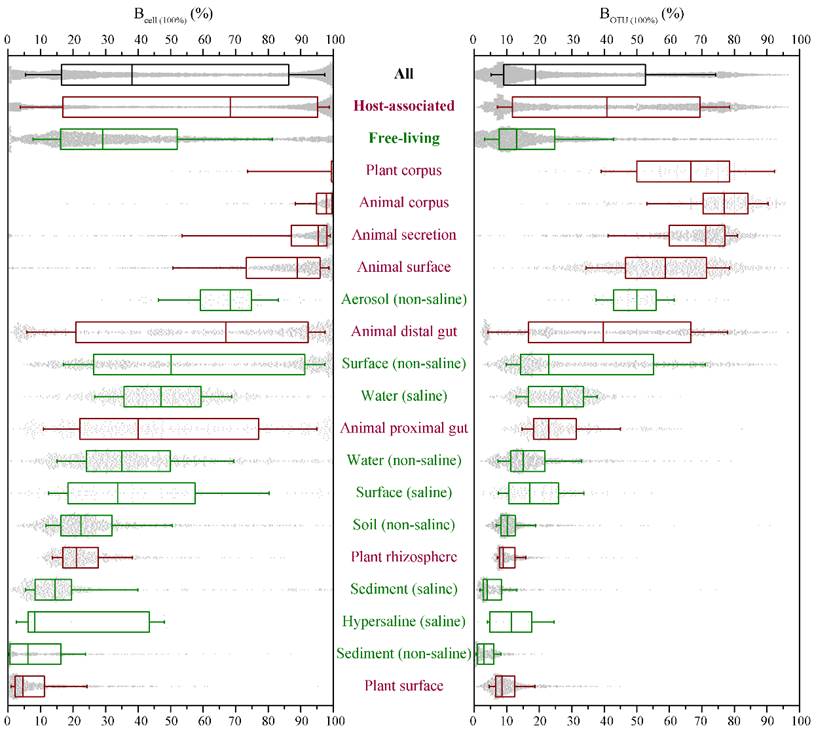Recently, a research article entitled "Estimate of the sequenced proportion of the global prokaryotic genome" was published on the top journal Microbiome(IF 11.607). Associate Researcher Zhang Zheng and Doctoral Candidate Wang Jianing are co-first authors; Professor Li Yuezhong and Associate Researcher Zhang Zheng are the co-corresponding authors. The State Key Laboratory of Microbial Technology (Institute of Microbial Technology) is the first corresponding institution.
Genome sequencing provides a blueprint for the evolutional and functional diversities of prokaryotes and improves our understanding of how they interact with each other, their hosts, and their surroundings. Since the first bacterial genome was completely sequenced in 1995, more than 200,000 bacterial and archaeal complete or draft genomes have been uploaded to the public databases resulting from the development of sequencing technology and the decrease in costs. However, what is the cells or taxa proportion of genome-sequenced bacteria or archaea on earth? In this study, researchers conducted a large-scale sequence alignment between the data released by EMP and the sequenced bacterial or archaeal genomes in the public database, showed the present situation of prokaryotic genome sequencing in the earth biomes for the first time.
Authors found that the medians of the genome-sequenced proportion of the cells and taxa in different biomes reached 38.1% (16.4%-86.3%) and 18.8% (9.1%-52.6%), respectively. The sequenced proportions of the prokaryotic genomes in biomes were significantly negatively correlated with the alpha diversity indices, and the proportions in host-associated biomes were significantly higher than those in free-living biomes. Owing to a set of cosmopolitan OTUs that are in multiple samples and also sequenced preferentially, only 2.1% of global prokaryotic taxa are represented by a sequenced genome. The majority of the biomes were occupied by a few predominant taxa with high relative abundance and much higher genome-sequenced proportions than numerous rare taxa.

Genome-sequenced degree of prokaryotic biomes.
These results revealed the current situation of prokaryotic genome sequencing for earth biomes. On one hand, over 20 years of sequencing data accumulation showed the genetic information of a specific prokaryotic biome may have been reported to a considerable degree. On the other hand, our current understanding of global prokaryotic genomic information remains very limited due to the large number of genome-unsequenced rare taxa, and the exploration of this huge genetic resource is just beginning. These results provided a more reasonable and efficient exploration of prokaryotic genomes, and promote our understanding of microbial ecological functions.
Professor Li Yuezhong's research group had been engaged in basic and applied basic research on drug-derived microorganisms for a long time. In the past two years, part of their research work was published in mSystems(2020,10.1128/msystem.00412-20) and Environon Microbiol(2019, 10.1111/1462-2920.14817).2018,10.1111/1462-2920.14282),Comput Struct Biotec(2020,10.1016/ j.carol carroll SBJ. 2020.06.003),Microb Biotechnol(2019,10.1111/1751-7915.13421) and other international journals.
This work was supported by the National Key Research and Development Program, the Special Investigation on Scientific and Technological Basic Resources, the China Postdoctoral Science Foundation and the Special Funding for Postdoctoral Innovation Project of Shandong Province.
The link of this paper:
https://microbiomejournal.biomedcentral.com/articles/10.1186/s40168-020-00903-z
Written by:Zhang Zheng
Edited by:Chehuiqing